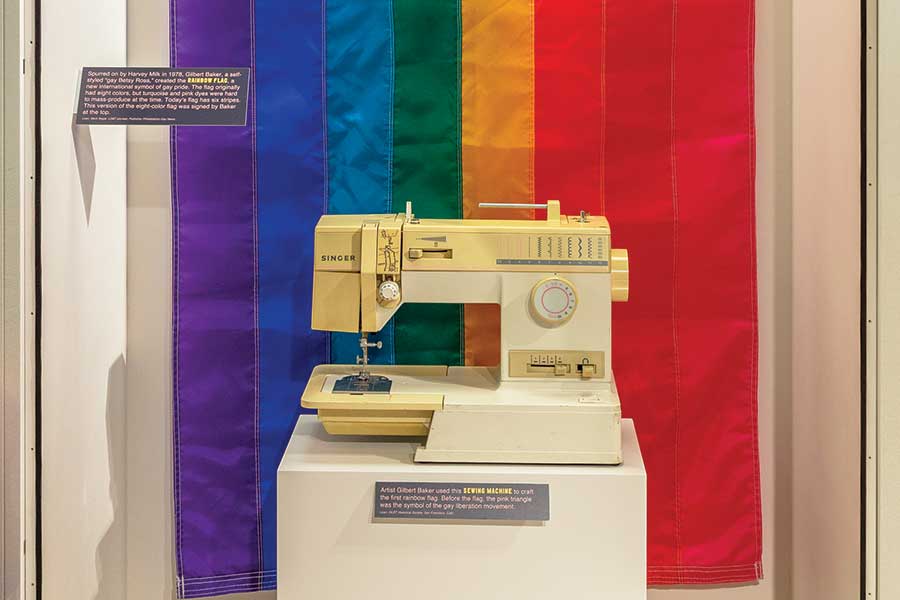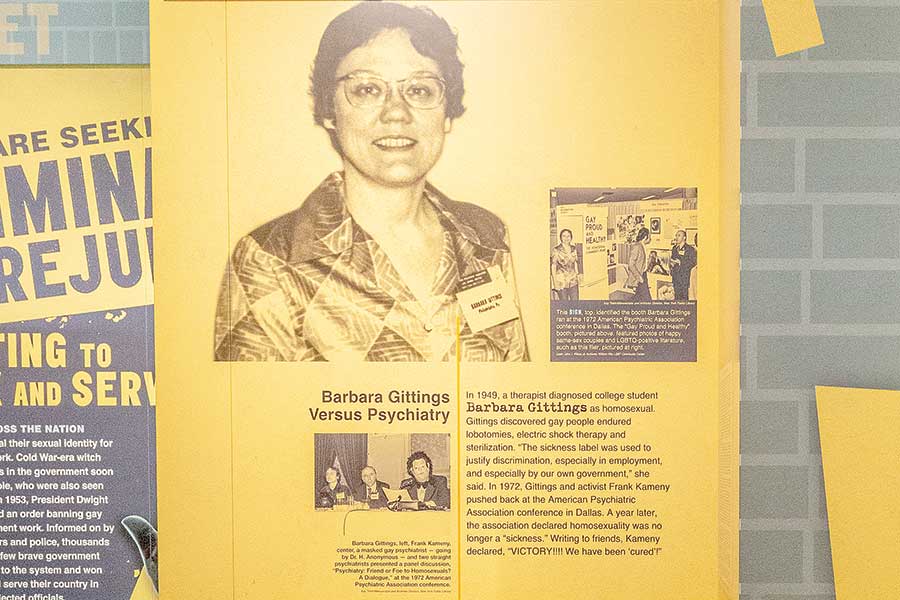On March 8, the front pages of nearly a dozen national LGBTQ newspapers — including this one — will be lined up along the front of the Newseum in Washington, D.C.
The presentation kicks off the opening weekend of a new exhibition at the news- and media-centric museum called “Rise Up: Stonewall and the LGBTQ Rights Movement,” which commemorates the 50th anniversary of the Stonewall riots and highlights how savvy activists around that the time utilized protest and their free-speech rights to fuel the crusade for LGBTQ equality.
“In the early days, you had activists publishing their own newspapers in order to get the word out about activism and to make change,” said Patty Rhule, vice president of content and exhibit development at the Newseum. “So we thought [the Stonewall anniversary] was a great opportunity to show how everyday Americans used the power of the press and free speech to make change and [gain] equality for LGBTQ Americans — and to show how vibrant the First Amendment was then and still is now.”
“Rise Up” spreads across multiple rooms on the sixth floor of Newseum. Viewers can reach it via dramatic glass elevators that open to a giant sculpture — almost like a tunnel — leading to a brick wall that emulates the iconic Stonewall Inn.
“There we talk about the prelude to Stonewall — what life was like for a gay American during that time period, when showing affection could get you arrested, when you could lose your job if it was found out,” Rhule said.
Those ideas are made real on a wall plastered with disturbing headlines from the 1950s and ’60s that show how pervasive negative attitudes about homosexuality were then.
One from the Washington Post in 1950 blares, “Names of 200 Perverts Listed for Firing by U.S. Agencies,” while another, from the Coronet the same year, warns that homosexuality is the “New Moral Menace to Our Youth.”
The story takes a decidedly more victorious turn in the main exhibition hall, spotlighting the Stonewall riots that began in the wee hours June 28, 1969, and how the uprising turned the tide in the struggle for equal rights for queer Americans.

Flag: Loan, Mark Segal, LGBT pioneer, Publisher Philadelphia Gay News; Sewing machine: Loan, GLBT Historical Society, San Francisco, Calif.
Photo: Newseum
Interactive displays dot the gallery, introducing viewers to well-known and obscure LGBTQ activists from throughout the decades — folks you may not find in history books, such as Barbara Gittings, who initiated the nation’s first gay protests in Philadelphia; civil-rights pioneer Frank Kameny; and San Francisco politician Harvey Milk.
Rhule said curators scoured the country for artifacts to bring the story to life. Guests will find “gay Betsy Ross,” Gilbert Baker’s original prototype of the gay flag and the sewing machine he used to stitch it together. There is a button from the first Christopher Street Gay Liberation Day in 1970, an armband worn by Gittings in a Philadelphia Pride parade in 1972, and an autographed script from the locally shot 1993 film “Philadelphia.”
Philadelphia Gay News publisher Mark Segal shows up in a display about the Gay Raiders, a small group that orchestrated a series of more-militant protests called zaps, in which rabble rousers stormed the sets of several popular TV programs such as “CBS Evening News” with Walter Cronkite to shout a message about not being appreciative of the way networks were covering — or not covering — the gay community.
Segal also appears in one of three films produced especially for the exhibition, “Into the Streets,” in which he and other activists like Sen. Tammy Baldwin, Stonewall veteran. Martin Boyce and transgender advocate Bianca Rey discuss the change that the Stonewall riots inspired.
The exhibition also includes more modern elements that not only illustrate how far the community has come since 1969, but also the contemporary struggles that kept activists in the streets, like the AIDS crisis and the government’s hesitation to put proper funding toward a cure, “Don’t Ask, Don’t Tell” and the rise of violence against transgender youth.
Rhule said the curatorial team interviewed dozens of historians, journalists and activists to weave together all these elements in a way that would resonate with visitors and demonstrate how Stonewall continues to inspire and embolden new crops of LGBTQ freedom fighters.
“Young people may not be able to relate to images from 50 years ago, but when they see young activists depicted in the exhibit, they’ll know that this isn’t just a historical effort — this is a now moment,” she said.
“Rise Up: Stonewall and the LGBTQ Rights Movement” will be on view March 8-Dec. 31. The newspaper front pages will be on view during the opening weekend of March 8-10. The front pages also can be viewed on the Newseum’s “Today’s Front Pages” app.
